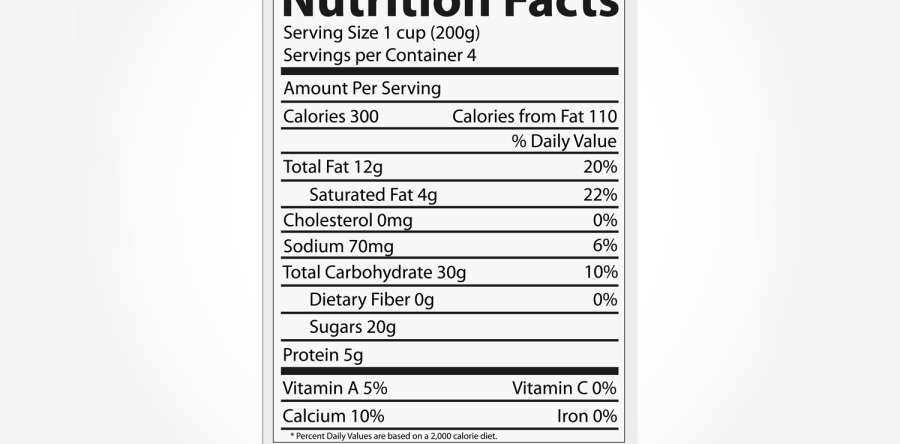Do you know what is in the packaged foods you buy? Fortunately, consumers are taking on more of a responsibility to know what is going into their bodies. Are you on the path to eating healthier and losing weight? If so, here are some guidelines to keep in mind when looking at a food label:
1. All specifications listed are based on the product’s “serving size”
- For example, the calories listed are for the serving size only, not the entire package
- Same with fat, sodium, sugar, vitamins & minerals
- Pay attention to how many servings are in the package
- Ask yourself, ‘How many servings am I eating?’
2. Carbohydrates, fats and proteins are listed by weight in grams
- To know how many calories are in 1 gram of each, follow this guide:
- 1g of carbohydrates: 4 calories
- 1g of fat: 9 calories
- 1g of protein: 4 calories
3. Look out for sodium!
- Many packaged food is overloaded with sodium
- The recommended daily allowance is 2400 milligrams/day
- NOTE: This can be a high amount if you are trying to lose weight or watch your blood pressure
4. Ingredients are listed in order of weight by serving
- In other words, the ingredients listed first are going to have higher amounts than the ingredients listed last
5. Manufacturers use different terms to list fats and sugars
- Fats: triglycerides, lard, oil (coconut, safflower), hydrogenated vegetable shortening, palm kernel oil and more
- Sugars: fructose, lactose, maltose, dextrose, sucrose, corn syrup, high-fructose corn syrup and more
6. “Fat Free” doesn’t necessarily mean it is good for you!
- Remember that in order to lose body fat, you have to burn more calories than you take in
Would you like weight loss planning and coaching? Call Vayda Medical Weight Loss today at (330) 847-6220 to schedule your consultation!
Information provided by: Lifestyles Technologies, Inc. and fda.gov


